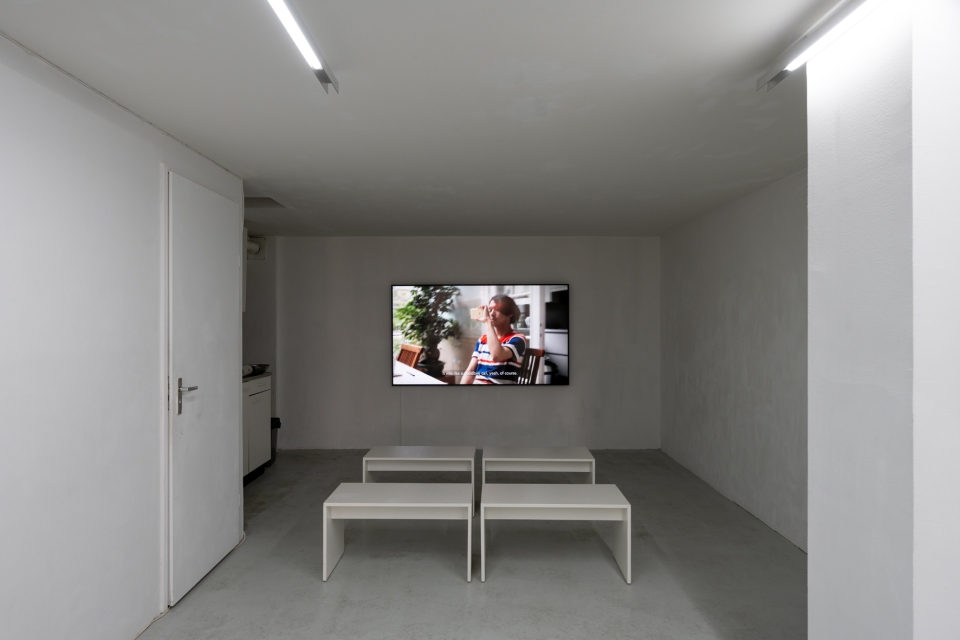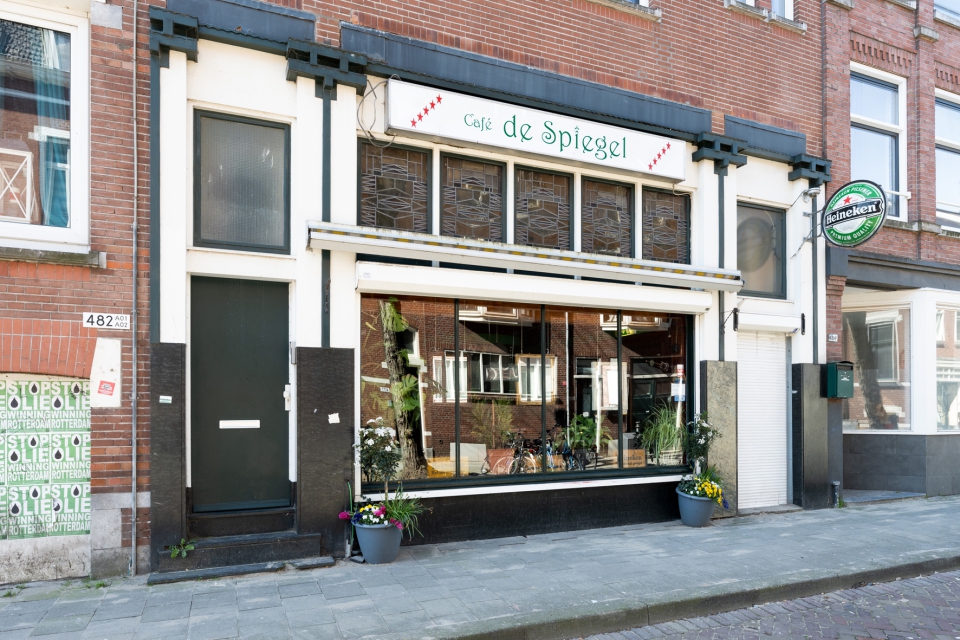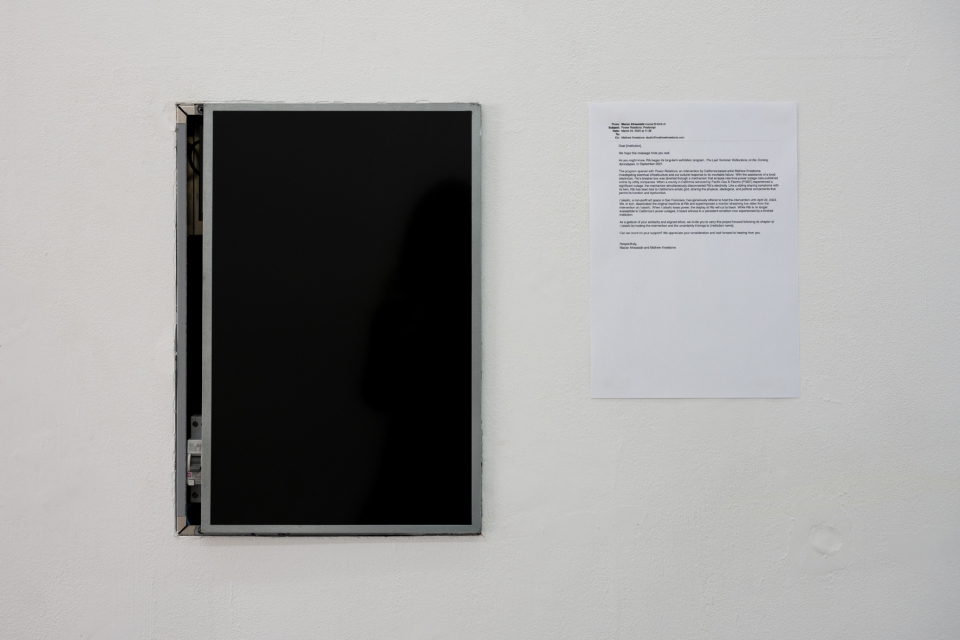Part 1: The Tail’s Bend
25.03.2023
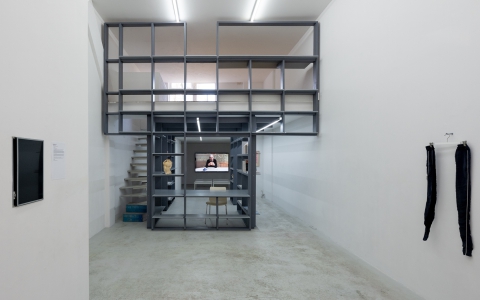

Exhibition view Volume II, Part 1: The Tail’s Bend, April 2023, Rib. Photo: Lotte Stekelenburg
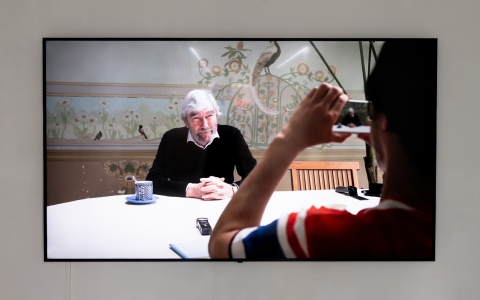

Yuki Okumura, Welcome Back, Gordon Matta-Clark, 2017. Photo: Lotte Stekelenburg
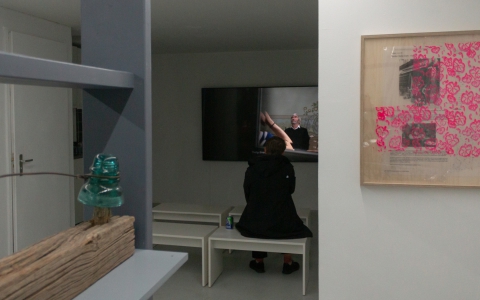

Exhibition opening Volume II, Part 1: The Tail’s Bend with works by Yuki Okumura with Hisachika Takahashi, March 2023. Photo: Job Willems
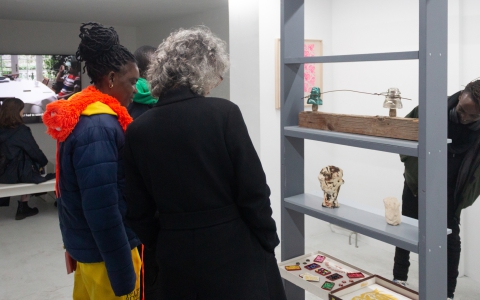

Exhibition opening Volume II, Part 1: The Tail’s Bend, March 2023. Photo: Job Willems
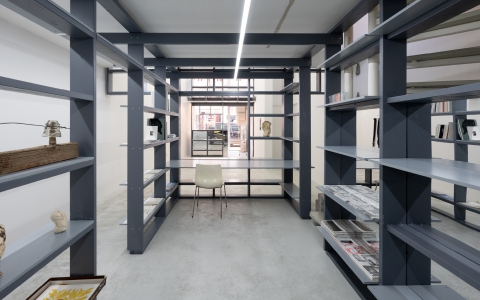

Exhibition view Volume II, Part 1: The Tail’s Bend, April 2023, Rib. Photo: Lotte Stekelenburg
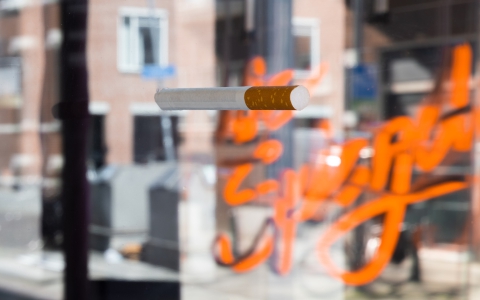

Annaïk Lou Pitteloud, Bar (Rotterdam) and Portrait in the Mirror. Photo: Lotte Stekelenburg
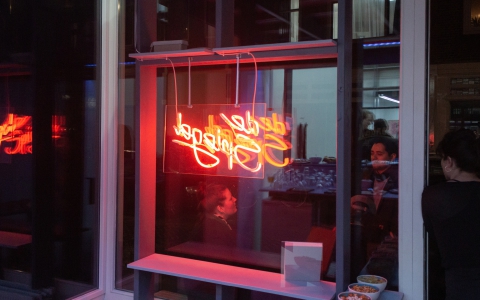

Exhibition opening Volume II, Part 1: The Tail’s Bend, March 2023. Photo: Job Willems
Please join us for the opening of the first part of The Last Terminal: Reflections on the Coming Apocalypse, Volume II.
Doors open at 19:00 and a music set by Linus Bonduelle will start at 21:00. As always, we invite you to join us for drinks and locally made appetizers, until one particular neighbor around the corner shuts us down.
Moving on to a subsequent chapter of The Last Terminal, we wonder if it is going to be a smooth transition. The idea of resetting has crept into the vocabulary as a human action, when initially it was used to talk about computer programs or mechanical technology. If a reset wipes the slate clean, what happens to everything that was there before? We notice the inadequacy of such terms referring to the digital realm when it comes to deeply felt experience, bulky objects or artworks. To give an example, not too long ago we happily accepted two large green pedestals from the storage of the Museum of African Art in Belgrade, and we now wonder where they will go.
How is a reset possible in circumstances that don’t accommodate clean cuts? Throughout the entirety of Volume I, we have been dealing with the conundrum of entangled time and histories, which is why it has been meaningful to hang on to parts of previous exhibitions while simultaneously inviting new contributions and forming new constellations. As the first year and a half of The Last Terminal draws to a close, we are still asking how to hold onto something while letting it live somewhere else?
In Volume II, Part 1: The Tail’s Bend, we welcome new works by Annaïk Lou Pitteloud, a new spatial intervention by Olivier Goethals, a postscript to Mathew Kneebone’s Power Relations, a film by Yuki Okumura and an advertisement placed by the artist in a local newspaper.
Okumura’s film Welcome Back, Gordon Matta-Clark documents an unusual conversation between Okumura (1978–) as Matta-Clark (1943–1978) and curator Flor Bex, who invited Matta-Clark to Antwerp in 1977 to create a large-scale building intervention project titled Office Baroque, while also revisiting Matta-Clark’s journey throughout Europe in the aftermath of his twin brother’s suicide in 1967, which echoes with Okumura’s own personal recollection. Revolving around the realization of Office Baroque, its unfortunate destruction after the artist’s premature passing, and its eventual “reincarnation” into Museum of Contemporary Art Antwerp (M HKA), the film narrates stories of friendship and brotherhood between multiple pairs of kindred spirits partially overlapped or “cutting into each other.”
Office Baroque was done without permission from the Antwerp authorities (the building facade was unchanged; cuts were made inside). To draw people’s attention, Matta-Clark put a fake advertisement in a local newspaper to entice apartment hunters: “Antwerp River—View Studios Burelen, renovated in a surprising artistic way […].” Following this, Okumura put his own, slightly enigmatic advertisement in the Charlois-Fejienoord edition of the newspaper De Havenloods to see if it will attract people in the neighborhood.
Annaïk Lou Pitteloud’s White on Blue (Emergency Room) evokes a fundamental motif, the line which, multiplied in grids, slicing vertically across the canvas, or schematising a horizon, became the subject par excellence of abstract expressionism. The parenthesis, in contrast, opens a different narrative—summoning the image of a body lying on a stretcher, with clothes cut off for an emergency operation. This juxtaposition is reminiscent of the incessant journey of artistic production from the street to the so-called high culture, and vice versa. The two worlds evolve in parallel due to the perpetual movement of capitalist recuperation and the trajectory of artists whose lives are often alien to the exhibition contexts in which their work is presented.
Pitteloud’s Portrait in the Mirror loosely refers to René Magritte’s 1937 oil painting, La reproduction interdite. The exhibition context gives shape to each occurrence of the work. ‘De Spiegel’ is a typical name for the brown bars found in the Low Countries, which are seen as pillars of the proletarian spirit. The functional decoration of these cafés is often reduced to a mirror behind the zinc, a sort of living tableau that has seen every day and night.
The series of neon lights to which this work belongs pays homage to places of popular culture and to the specificities of the cities that host them. Bars are indeed essential markers of the topography and history of localities, to the point of becoming high places of historical narration, as well as the setting for many artworks; they are also the hosts of the stories of those who frequent them. Bar (Rotterdam) bows to the namesake establishment on the same street as Rib, which has hosted many an opening party.
Mathew Kneebone’s Power Relations: Postscript is a modification to Power Relations, installed at Rib since 2021. The intervention at Rib has recently been deactivated and retrofitted with an LCD panel displaying a live video feed of an iteration of the work currently installed at / (slash), a non-profit space in San Francisco, as part of the exhibition Through the Electric Grid Promised Land.
When / (slash) loses power, the camera pointed at the work will turn off and the LCD panel at Rib will consequently turn black. After the outage has been resolved and power returns, the camera at / (slash) will turn back on and resume live streaming to Rib. The work symbiotically unites two distant spaces through shared infrastructure and ethos, where—through a kind of flashback—Rib continues witnessing the ongoing ruptures experienced by other institutions willing to subject themselves to the precarity of the Californian grid.
A letter inviting other institutions to host the intervention is displayed near the retrofitted machine at Rib. The invitation to carry the work forward draws allusions with the postscript in Albert Lamorrisse’s The Lover’s Wind, which was completed by his wife Claude Jeanne Marie Duparc and son Pascal Lamorisse. By linking them to California’s unstable energy grid in the same way that Rib has been over the past 18 months, the possibility for solidarity in difficult but very real circumstances emerges, where failure and blackouts start to look like the proverbial gift that keeps on giving.
Olivier Goethals studied Architecture and Urban Development. He is working simultaneously as architect and artist. In his wide practice he researches the connection between space and consciousness. Olivier made spatial interventions and artistic installations for venues, such as Het Nieuwe Instituut Rotterdam, Z33 Hasselt, Extra City Antwerp, Be-Part Waregem, SMAK Ghent & Palais De Tokyo Paris. Previously he worked as a freelance senior architect for De Vylder Vinck Taillieu (2008–2016). Since 2010, he is teaching at the KULeuven Architecture Department. He was a guest critic at RU Ghent faculty of Architecture, LUCA School of Arts Experimental Studio and ETH Zurich faculty of Architecture. Goethals is in charge of the design and implementation of all spatial interventions for the art collective 019.
Mathew Kneebone’s practice is founded on research into uncertainties surrounding technology, often combining different histories, myths, and folklore. His work touches upon various media including drawing, electronics, writing, sound, and performance to reconfigure or re-contextualize certain technologies, exploring an ambivalent blend of past and present. His work has recently been exhibited at Kunstverein, Amsterdam; 019, Ghent; Extra City, Antwerp; and Cloaca Projects, San Francisco. His writing has been published in Trigger Magazine, OASE Journal for Architecture, The Bulletins of The Serving Library, Another World, Umwelten, among others. He has given talks and workshops at Minnesota Street Project, San Francisco; V2_ Lab for Unstable Media, Rotterdam; Central Saint Martins, London; Sandberg Instituut, Amsterdam; San Serriffe, Amsterdam; EKA Gallery, Tallinn; Sitterwerk, St. Gallen; UEL, London. He teaches at California College of The Arts, San Francisco, where he is thesis writing supervisor.
Yuki Okumura (JP, 1978) works at the intersection of body and translation, through films, installations, performative actions, and writings. Since 2005 onwards, in parallel to—or rather as part of—his own artistic practice, Okumura has been serving as a translator in the literal sense, between English and Japanese. Soon after leaving Japan in 2013, he ran across Hisachika Takahashi, with whom he initiated a joint project informed by their artistic and biographical overlaps. Its aspects and phases have been presented at Project Room, WIELS, Brussels, 2013; Mori Art Museum, Tokyo, 2013; Exhibition Research Center, Liverpool, 2013–2014; Annet Gelink Gallery, Amsterdam, 2015; Maison Hermès Le Forum, Tokyo, 2016; June Art Fair, Basel, 2019 (with MISAKO & ROSEN); among others. Okumura’s 2016 poem Sunset Song deviated from the project’s framework, opening up a pathway that eventually led to his subsequent film Welcome Back, Gordon Matta-Clark, 2017.
Annaïk Lou Pitteloud (CH, 1980) lives and works between Bern and Brussels. Her work makes use of different media to direct the viewer's attention to the invisible components of image-construction, the museum space and the creative process itself. Pitteloud’s pared-down vocabulary raises critical questions to do with social issues, while challenging the art world’s mechanisms and its codes of perception, transmission and presentation. Her work has been presented amongst others in: Musée cantonal des Beaux-Arts Lausanne, CH; Kunstmuseum St. Gallen, LV; Museo cantonale d'Arte Lugano, CH; Kunsthalle Bern, CH; Witte de With Rotterdam, NL; Riga Biennal (2018), Moscow Biennal, RU; Shanghai Biennal CN.
Hisachika Takahashi (JP, 1940) works at the intersection of memory and collaboration, through paintings, sculptures, collages, drawings, and instructions. After leaving Japan in 1962, in parallel to—or rather as part of—his own artistic practice, Takahashi served as an assistant to Lucio Fontana (1964 –1966) and Robert Rauschenberg (1969–2008), both of whom he also collaborated with, while also occasionally cooking at the artist-run restaurant FOOD (1971–1974), with Gordon Matta-Clark and others. Solo shows have been held at Galerie Cavallino, Venice, 1963; Galleria Montenapoleone, Milan, 1964; Wide White Space, Antwerp, 1967; 112 Greene Street/Workshop, New York, 1973; Tampa Museum of Art, Tampa, 1987; Project Room, WIELS, Brussels, 2013; Sean Kelly Gallery, New York, 2013; Exhibition Research Center, Liverpool, 2013–2014; MISAKO & ROSEN, Tokyo, 2021; Schiefe Zähne, Berlin, 2021; among others.



